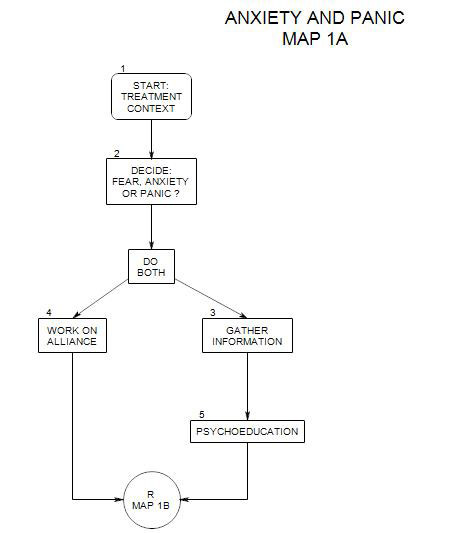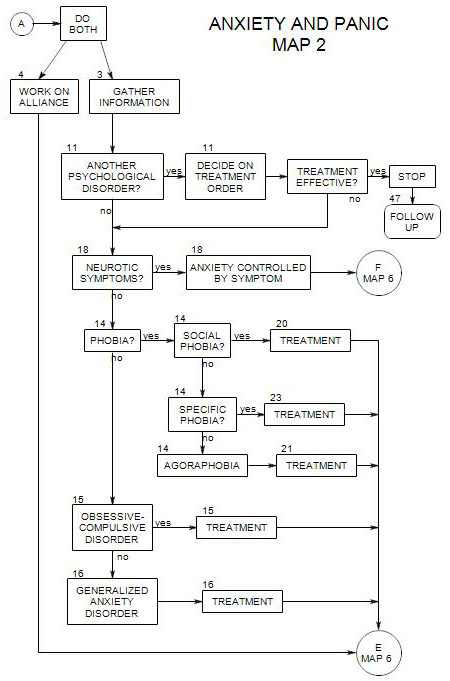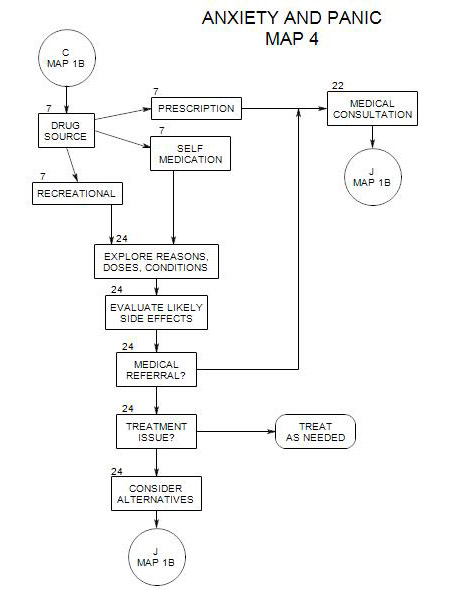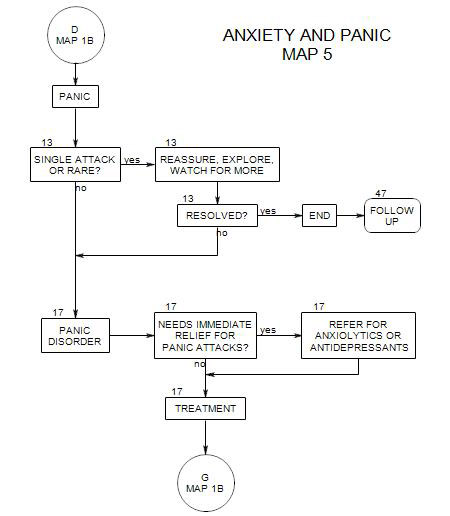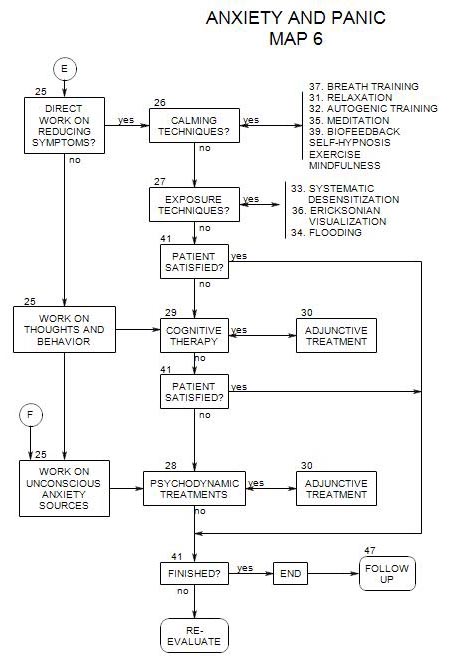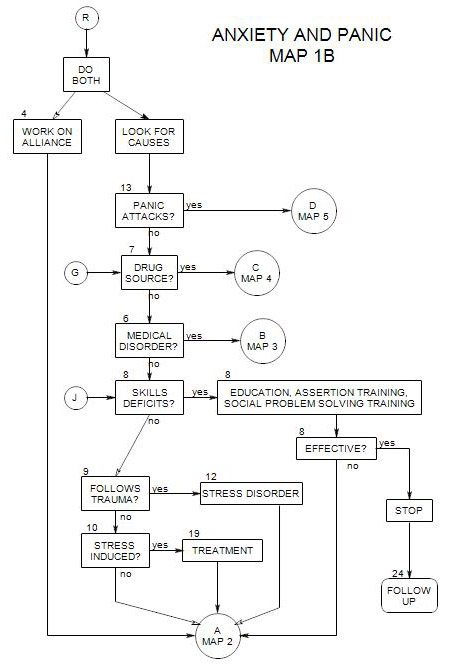
SECTIONS: 4 | 6 | 7 | 8 | 9 | 10 | 12 | 13 | 19 | 24
-
Follows Section 7 on Map 1B
It is important to check early on for medical disorders that can cause anxiety or panic, especially before beginning a lengthy exploration of the person’s cognitive and emotional sources of the symptoms. It is possible that you could treat the psychological antecedents of anxiety or panic without leading to remission of symptoms, because a medical condition was a major source.
Some diseases may have anxiety as their natural side effects, either by affecting biological systems that are directly implicated in anxiety, or by producing changes that impact on the person’s ability to cope. In other cases, the medication used to treat the disability or disease produces changes that can lead to anxiety [ See Section 7 ].
A reasonable overall plan would be to treat [1] disease first, then [2] reactive anxiety, and finally [3] anxiety unrelated to the medical issues
Ask about any disabilities or physical limitations the person may have, and how he/she copes with them. Ask about the implications for his/her life. Find out whether an increase in anxiety is associated with a change in-
- the person’s disability.
- effects of the disability on the person’s life or goals.
- its impact on others.
- the reaction of others to it or to the person for having it.
Ask about any chronic diseases the patient may have. Then ask about implications for his/her life, as suggested above for disabilities. If necessary, consider going through the list of diseases in Section 50. Many diseases are commonly associated with anxiety.
Medical conditions that can cause panic-like symptoms are discussed in Jacob and Rapport (1984) and presented in a table by Schneider and Ruhmland (1997, pp. 14-16).
One possibility would be to give a person a checklist of medical issues that could be causing or exacerbating his/her anxiety; and once he/she has completed it, go over each of the items together. For any medical issue, also ask about the medications needed to treat it, and consider their potential as sources of anxiety.
6a. Personal Medical History
You can inquire about physical and psychiatric illnesses, diseases, injuries, drug & alcohol use, surgery, hospitalizations, diagnoses, all of which can have an impact on a person’s anxiety level. Especially important is information about previous anxiety episodes, how they were treated, and how effective any treatments were.
6b. Family Medical History
Here we are looking both for genetic possibilities and for the emotional and cognitive impact that a family member’s disease or disability might have had on our patient. For example, a patient whose family members developed early Alzheimers might watch intently and fearfully for her own memory lapses.
6c. Refer for Medical Checkup [ Section 22 ]
This is a good idea if there is any possibility that medical sources are contributing to the person’s panic or anxiety.
6d. Contact Physician [ See Section 22 ]
Tell the patient’s physician about the patient’s symptoms, and ask whether the patient’s anxiety could be a side effect of the patient’s disorders or medications
6e. Formal Diagnosis
Consider using 293.89: Anxiety Disorder Due to a General Medical Condition
References
American Psychiatric Association: DSM IV
Jacob and Rapport, 1984
Lesser, 1996
Preston, O’Neal and Talaga, 2002
Schneider and Ruhmland, 1997
